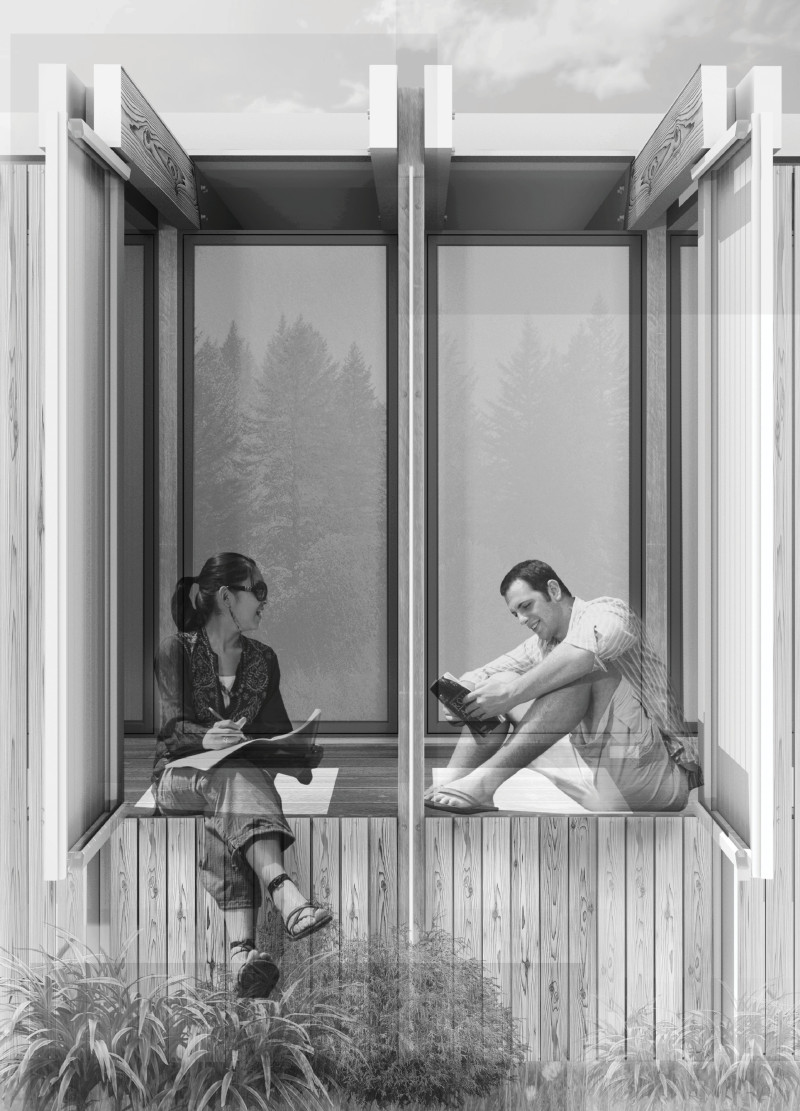5 key facts about this project
The primary function of the Earth Energies Sanctuary is to serve as a getaway that encourages occupants to disconnect from daily life and engage in intimate interactions, whether with each other or with nature. The cabin is characterized by its thoughtful design, emphasizing flexible layouts that cater to varying needs, whether for privacy or socialization.
The structure features a timber framework made primarily of locally sourced cypress wood, offering durability and an inviting aesthetic. Large glass panels are strategically placed to maximize natural light and views, creating a seamless transition between indoor and outdoor environments. Operable walls enhance this interaction, allowing users to adjust the degree of connectivity with nature at will.
One distinguishing aspect of this project is its commitment to sustainability. The integration of photovoltaic panels ensures energy self-sufficiency, reducing reliance on non-renewable sources. Additionally, the structure employs a rainwater harvesting system, which not only diminishes water consumption but also exemplifies innovative resource management. The use of screw piles for the foundation minimizes environmental disruption, aligning with a design ethos that prioritizes ecological considerations.
The interior layout consists of adaptable spaces, including a sleeping area that maintains a sense of privacy, a living zone conducive to various activities, and bathrooms designed to enhance the sensory experience while integrating views of the natural setting. This flexibility allows occupants to tailor their interactions to fit their preferences.
The Earth Energies Sanctuary stands out among architectural designs focused on retreats by merging minimalism with environmental responsibility. Local material usage, energy independence, and a design that emphasizes both privacy and communal interaction create a unique, functional space. Readers interested in further exploring this project’s architectural plans, sections, and design ideas are encouraged to review the project presentation for additional insights into its construction and conceptual framework.


























